Versuchen GOLD - Frei
Kefir Culture
Eat Well
|Issue #23 2019
The popularity of this cultured milk drink is growing across the world due to its high levels of probiotics and vitamins. We caught up with two artisanal kefir producers to find out why.

It’s believed kefir grains originated in the north Caucasus Mountains. These “grains” are used to ferment milk products to produce a drink high in probiotics and various vitamins. You can also find water-based kefir drinks in various forms and, while they are still good for you, research suggests the milk version of kefir offers higher amounts of probiotics and vitamins.
“The kefir grain itself isn’t a traditional cereal grain but a colony of lactic acid bacteria and yeast,” says Heidi Fallding from biodynamic Marrook Farm.
Kefir contains a very high content of living probiotics, which, if cared for correctly, can survive indefinitely.
It has a tart flavour — think Greek yoghurt but with a thinner consistency — and usually has a higher fat content than yoghurt. While kefir might have a similar taste to yoghurt, it’s much higher in beneficial probiotics, good bacteria and vitamins.
The benefits of kefir
This ancient fermented drink is thought to pack a punch when it comes to properties that are beneficial to your body and health. Studies have shown it is anti-microbial, anti-inflammatory and high in antioxidants. Artisanal kefir also contains high levels of protein, calcium, potassium and B vitamins.
Like any cultured milk product, it’s good for the gut and can help with digestion. Trent Bos, from The Milk Thief Kefir, says, “We are starting to better understand the importance of gut health to overall health and wellbeing. One way to help maintain a healthy gut microbiome is through consuming fermented foods like kefir.”

How it’s produced
Diese Geschichte stammt aus der Issue #23 2019-Ausgabe von Eat Well.
Abonnieren Sie Magzter GOLD, um auf Tausende kuratierter Premium-Geschichten und über 9.000 Zeitschriften und Zeitungen zuzugreifen.
Sie sind bereits Abonnent? Anmelden
WEITERE GESCHICHTEN VON Eat Well
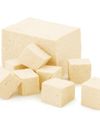
Eat Well
ARE YOU TO FU enough?
Love it or hate it, everyone has an opinion about tofu. Tofu is a very popular plant-based protein for vegans and vegetarians, but now this humble bean curd is starting to shine for meat lovers too as an alternative source of protein.
4 mins
Issue #47

Eat Well
Sweet TRAYBAKES
Whether you want to feed a group of people or make a batch of treats for the week, traybaking is a no-fuss way to cook up something sweet and easy that will please everyone. Your family and friends will love you when you offer them some of our: cinnamon scrolls; fruity chocolate; espresso brownies; lemon & coconut slice; or ginger cake with brown butter frosting.
10 mins
Issue #47

Eat Well
ROLL UP
When you roll food, whether in Lebanese bread, a thin pancake or whatever you choose, you can create a parcel of nutrition that is perfectly suited to your own tastes and needs. Here are some roll-up recipes that will suit every occasion including: mango, snow pea, & sprout rice paper rolls; oat crepes with coconut yoghurt & mixed berries; or beef meatball & tzatziki flatbreads.
7 mins
Issue #47
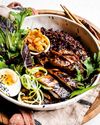
Eat Well
RICE BOWL Lunches
If you are working from home, or even enjoying your weekend, and lunchtime rolls around but you have no plans for lunch, then a rice bowl is an ideal saviour.
10 mins
Issue #47

Eat Well
PLANT-BASED PIES
Pies are a piece of gastronomic brilliance: a filling with a case and lid you can eat is food genius. The first pies date back to Egyptian times and there is a recipe for chicken pie that was carved into stone more than 4000 years ago. For millennia, however, the pie casing was mostly used to cook the filling, but for around 500 years or more we have been eating the pie crust too.
16 mins
Issue #47

Eat Well
20 FOOD CRAVING HACKS
Decipher the deeper causes of your cravings and discover tricks to curtail them.
5 mins
Issue #47
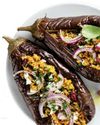
Eat Well
Eggplant (Solanum melongena L)
Eggplant is a wonderful option for vegans and vegetarians, extremely nutritious and highly versatile in the kitchen.
3 mins
Issue #47
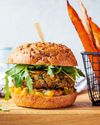
Eat Well
5 PANTRY SAVIOURS
Whether you're cooking a simple breakfast or something more exotic, here are five pantry food staples you should have on hand to cook plenty of delicious meals in the comfort of your own home.
4 mins
Issue #46
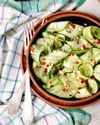
Eat Well
Cucumber (Cucumis sativus)
Cucumbers are delicious fresh but they also offer plenty more options in the kitchen.
3 mins
Issue #46

Eat Well
Our Chefs
Meet the chefs who bring this issue's recipes to you: Lisa Guy, Georgia Harding, Lee Holmes, Sammy Jones, Raquel Neofit, Naomi Sherman and Ames Starr.
6 mins
Issue #46
Translate
Change font size
